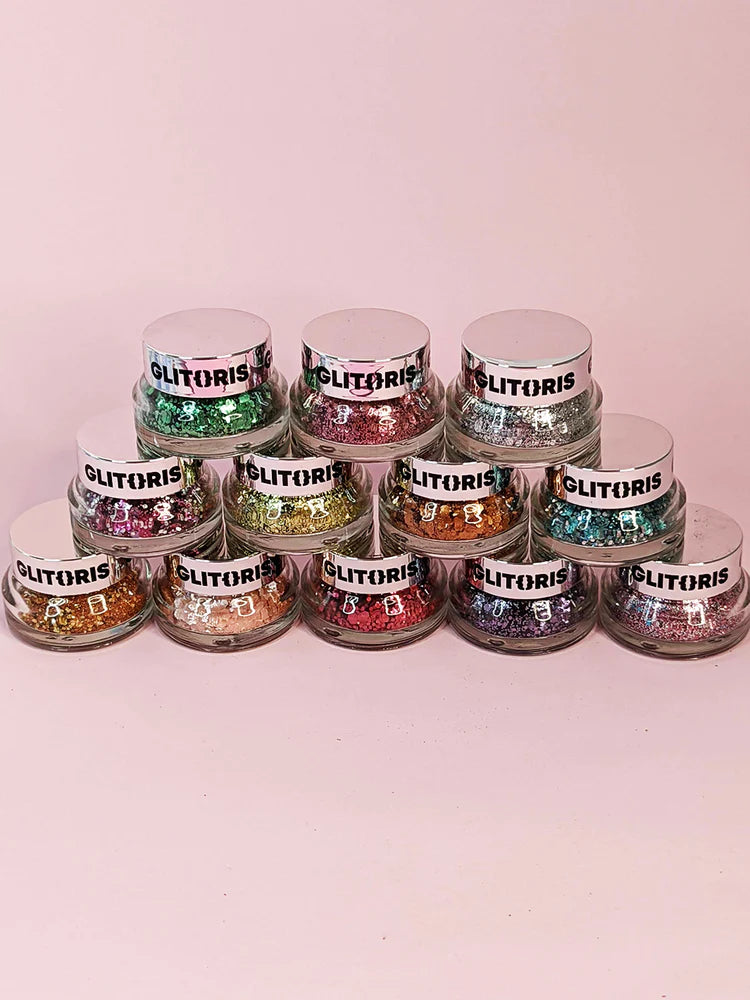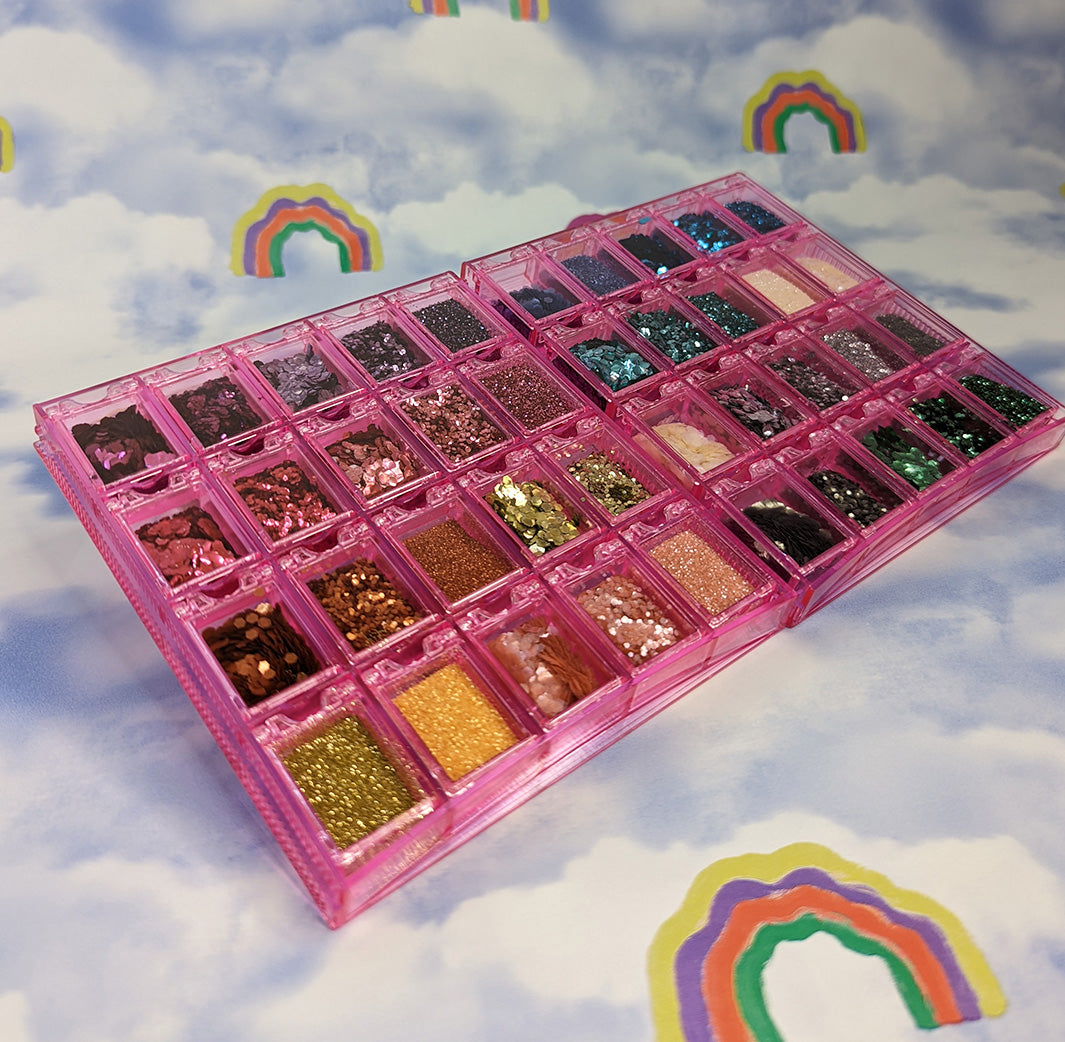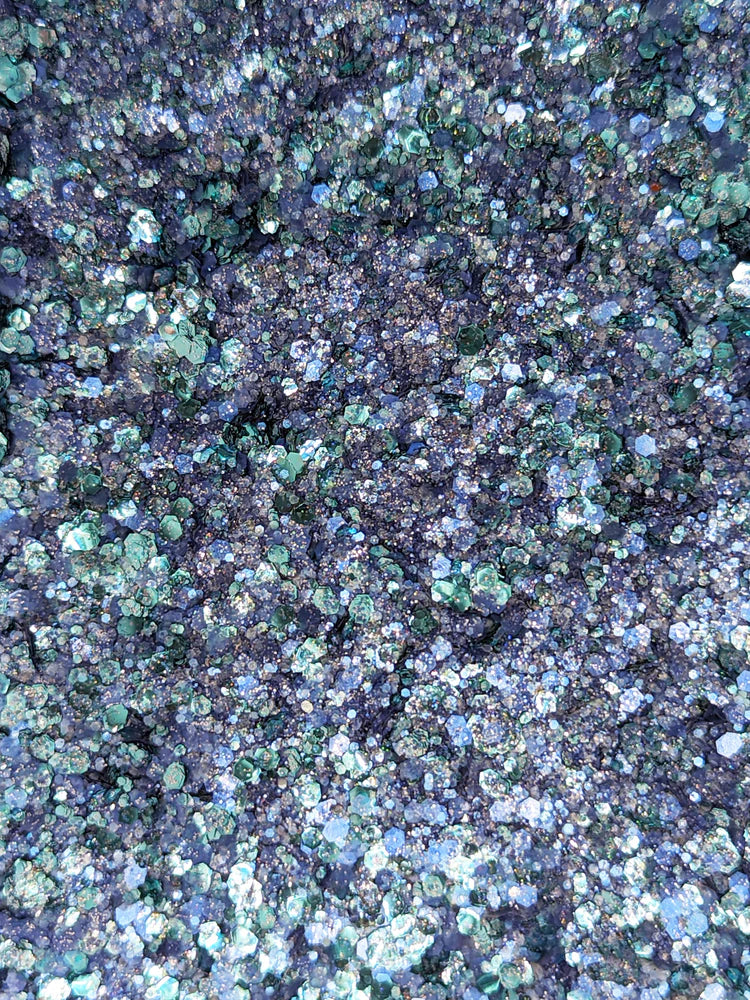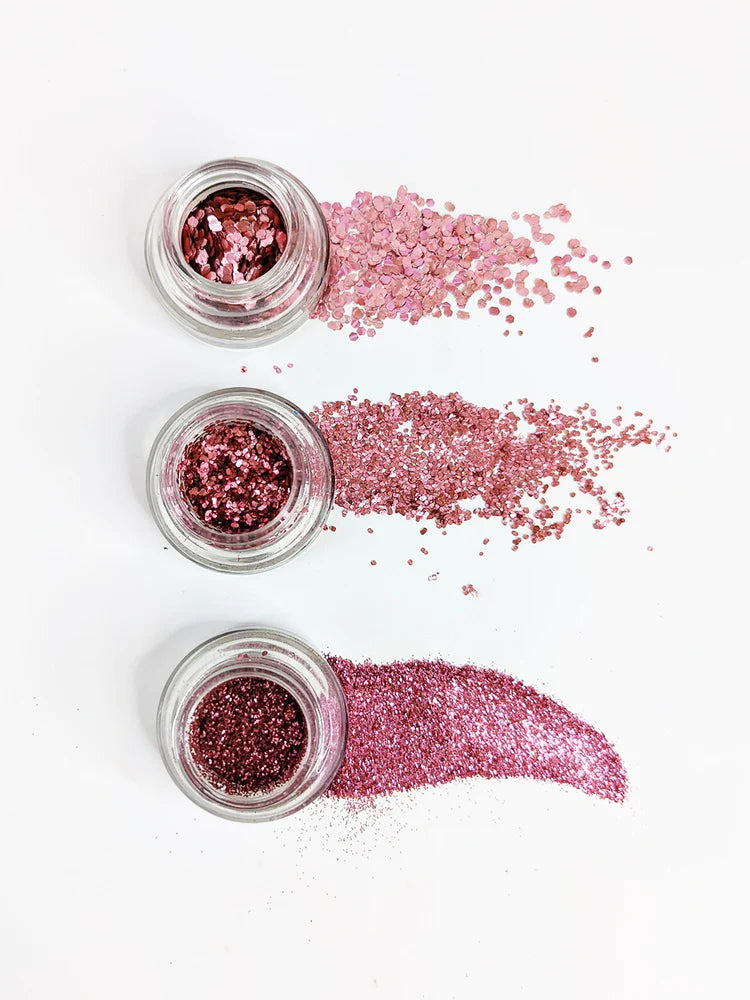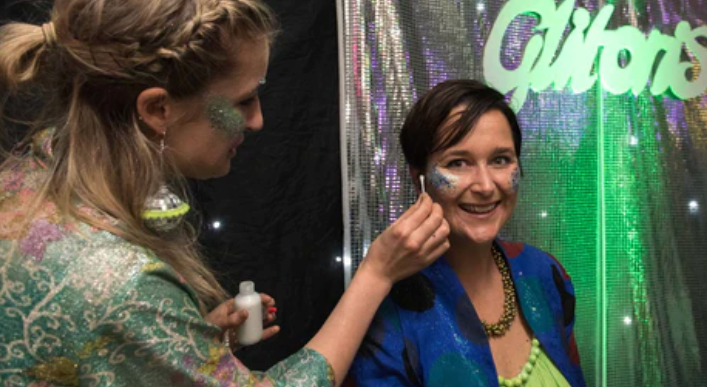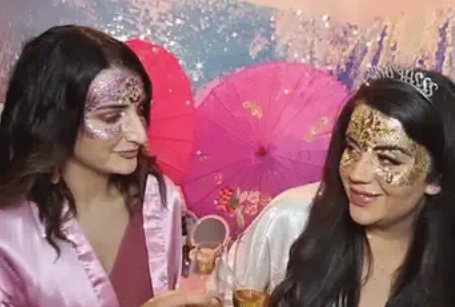How to tell if the glitter you're buying is biodegradable?

You've probably seen knock off Ray-Bans, fake AF Louis Vuitton bags and even some of these sold on the street. But did you know that FAKE biodegradable glitter exists? It's time to spot a fake - biodegradable glitter or just plain litter?
Yep. That's right. We hate to break it to you. (Excuse the pun.) Not all “biodegradable” glitter products are created equal. We won’t go into here, we have a whole other real talk RANT on the different types of biodegradable glitters.
AND to top it off there are many others that use tricksie marketing to label plastic cosmetic glitters as “compostable”, “eco-friendly”, “plant based” or the super bold “biodegradable”. When the reality is, folks, you are just popping cut up plastic on ya noggin. How to avoid this? Read on.

So, how can you tell if the glitter you are buying is biodegradable?
Well the short answer is, it’s difficult. Particularly now that there is a huge range of iridescent, pearl and holo silver glit that are TRUE biodegradable glitters.
And the good news is, there are signs you can pick up on. #RedFlags That's why we made this handy dandy guide so you can use your spidey senses and ESP to spot the FAKES like an absolute super spy of the world. (Instead of naming and shaming the buttload of companies attempting to pull the wool over ya eyes.)
Remember! These are the characteristics of true bioglitter...

Clues that you are about to purchase a glitter fake.
Clue #1: The glitter is cut into lots of shapes like stars, diamonds, moons, hearts or anything Halloween themed.

Yep, it breaks our heart to say… No shapes. Say goodbye moon. Unfortunately, biodegradable glitter comes only in a hexagonal shape. But WHHHHY? Why are there no pretty fun shapes??? #MeltDown
Well, the plant based material used in biodegradable glitter is a whole bunch softer than the plastic film used in traditional cosmetic glitter. The flexibility and softness makes it a bit of a cluster f*ck for manufacturers to make irregular shapes stable at these very small sizes.
Hexagons are the most structurally stable shape for glitter. The staple shape since the dawn of glitter (you can read more about this Glitstory here). A hex is how most lazer cut machines are configured AND glitter is actually measured in a HEX size (which is basically the diameter of the hexagon). So, unfortunately if you are seeing shapes, know that what you are buying is plastic glit. #VOM
Clue #2: Ingredients on websites are hidden or unavailable.
DON'T 👏 BUY 👏 GLITTER 👏 WITHOUT 👏 INGREDIENTS 👏 LISTED 👏
Apart from it being totes illegal to not list cosmetic ingredients at point of sale in Australia, it also means that literally anything could be in the product.
Most beauty companies that don’t want you to know what's in their cesspool of glit simply won’t list ingredients. #WillTheRealShadyPleaseStandUp? Hot tip: Look for cellulose as the hero ingredient. ;)
Clue #3: There is a HUGE variety of different colours and shades.
This one is hard to ascertain as again biodegradable glitter does come in lots of colours. But really it doesn’t come in HUNDREDS of colours. I would be calling the bluff if the company has a literal sh*t ton of colour variety.
Clue #4: The glitter comes suspended in a gel or cream.
This one might be controversial. But true bioglitter starts to decompose when exposed to organisms in the environment, but EXCELLENT A++++ biodegradable glitter also starts to break down when suspended in… water or liquid.
And if you are a trusty “turner-and-learner” of anything cosmetic, often the numero uno ingredient of any glitter gel has aqua AKA water. Remember biodegradable glitter is designed to, wellllllll… degrade.
So it is reasonable to hypothesise that any kind of formulation that makes bioglitter sticky will cause the glitter to start to break down. So if indeed these orgs are using biodegradable glitter it also brings about the question of this cosmetic’s shelf life.
So let's just say, I am super sceptical and yet to find a product that successfully does TRUE gel/cream bioglitter. (I am also happy to 100% be proven wrong on this one.) Come at me.

Clue #5: The glitter is sold super cheap.
The cost of bioglitter in its raw form is about 10-20 times what you will pay for plastic glitter. The material is simply more expensive. It is much more expeno as biodegradable glitter is made with plant-derived, renewable raw materials, sustainably sourced instead of super cheap PET film.
Add in the costs of the manufacturing process, gaining and maintaining sustainability certifications and this product is no longer on the super cheap side of the scale. The good stuff is the good stuff for a reason. Dirt cheap = super suss.

Frankly, those that are going the extra mile to provide a biodegradable glitter are not gonna pop their product in cruddy, cheap plastic jars. While this isn’t completely an indication that the glitter itself is made from microplastics, it is a sign that the company lacks consistency in its sustainability choices.
Look for those organisations working hard to be better at sustainability and often you can easily see how these values flow into the essence of every part of the biz.
Clue #7: How it feels on your skin. It is more scratchy than soft.
Did you know that bioglitter is recognised as almost 40% softer than PET glitter? You can literally feel the difference. Soft as duckling.

Plastic glitter often feels rough on the edges or scratchy on your skin. More often that not, it is because these glitters are coated in aluminium. YEP -metal.
To test, rub the glitter between your fingers and if it feels like coarse sand… You have yourself … Dum… Dum… Non-biodegradable glitter.
Clue #8: The glitter is holographic or iridescent.
You can eliminate holos pretty much all together. Baiiiiiii. It’s really only silver holographic glitter that exists today. No other holo colours. Nadda.
Iridescent is a wee bit hard to get your head around. There are some that sit in this category that are biodegradable, but a lot that are not. To ascertain whether it’s biodegradable or not, often an iridescent biodegradable glitter will be somewhat opaque but the film is not too clear, it is a little frosted. It’s quite nuanced, so perhaps in this instance just to be on the safe side buy your iridescent glitters from this guy right here. #Glitoris ;)
Clue #9: Environmentally friendly claims are left unsubstantiated.
Usually businesses that are environmentally friendly will share the efforts they have made on their sustainability journey. Look for the efforts made to substantiate claims through testing and certifications.
It is important to look for products that demonstrate the finished product will biodegrade in the natural environment. The best way to ensure this is to buy products that have been independently certified by reputable third parties.
Clue #10: It doesn’t pass the at-home tests.
Say you have already purchased glitter and have it at home and want to test to see if it's fake. (It’s good to be superduper sure.)
While you could pop it into the garden, compost or glass of water and waittt. AND WAIT. Like we did here. There is an easier way... You could be sciency AF and do a simple burn test.
Burn that glitter *cough* in the name of science.
- Step 1: Pop glitter on a sheet of aluminium foil.
- Step 2: Heat the foil underneath with a lighter.
- Step 3: Watch and wait to see what happens.
If the product melts, or it can be moulded, reforms into beads or sticks to the surface of the aluminium then it isn’t biodegradable. Alternatively, if it burns and turns to ash like a piece of paper or wood… You have yourself trusty biodegradable glitter.

Self check quiz - the easiest way to see whether it is glitter or litter?
For those that want to hunt out the truth we have made this dolly-esq quiz for you to check ya glit at checkout.

So there you have it folks, now you can spot a fake. Do you have biodegradable glitter or just plain litter?





